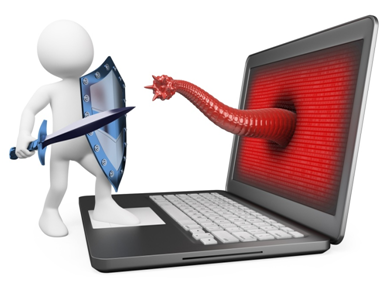Is Your PC free From Spyware or Malware?

Malware has become the name for any type of malicious software such as spyware, adware, or viruses that harms your computer’s and leads to the vulnerability. Generally, malware infections stem from internet activity or even just browsing internet sites to find your desired things. To know more in detail about it, you can go through the below given article.
This article portrays what infections, spyware and malware are, the way to evacuate a suspected malware contamination and approaches to ensure your framework against assault.
1: What is Malware and how does it infect your computer?
Malware has turned into the name for any kind of malicious software, for example, spyware, adware, or infections that damages your PC’s performance or security. Most malware diseases stem from web activity which incorporate downloading documents or even simply browsing internet sites. Most measures for ensuring against malware concentrate on approaches to make Internet browsing more secure. Different side effects can be connected with malware.
Calling on spyware removal technical support number is the best way to get rid of all kinds of spyware. Various symptoms can be associated with malware, so any one of the following symptoms could be good indicators of malware infection. Browser Redirects, Popups, Homepage Changes: It is additionally not unprecedented to encounter delays in the working framework stacking to the desktop.
Slow Computer Response: The computer may seem to be frozen or run slow during regular use.
Processor Utilization at 100% in Task Manager: The processor is by all accounts working extra minutes and/or gradually. To check the processor usage you need to press the CTRL + ALT + DEL keys in the meantime. At that point tap the Performance tab. Processor use is shown by the CPU Usage gage.
Virtual Memory Low Message: This message will continue showing up regardless of what changes are made to determine the issue.
2: Determine if Security Software is on Your Computer and Get Support
If security software is not installed on your PC, then you must get it installed by calling on spyware antivirus removal customer support ,in order to secure your computer, One easy way to confirm whether you have security software is to check the System Tray in the base right corner of your screen for a security symbol.
3: You should register your McAfee Security Software
Dell PCs can transport with McAfee Security Center or McAfee, either as a 30-day trial variant or memberships of up to 36 months. Enlistment of the item is a piece of the Windows first-time startup process for your PC. Just acknowledge the End-User License Agreement (EULA) and supply your email address for enrollment. No further activity is required.
4: You need to Run infectious Software Removal Tool
The Microsoft Malicious Software Removal Tool precisely recognizes and uproots around 80% of known infections and spyware from your framework.
Explore to the Microsoft Windows Malicious Software Removal Tool download page.
Click Download to begin the download process.
Click Run to download and run the project.
5: Ensure your Microsoft Security Features are Enabled
6: Install the Latest Anti-Malware Software to Protect Your Computer
You can find numerous home security software accessible for download at the Dell Store Anti-Virus and Security Center.
If you don’t want to buy any web security software for your computer, then Microsoft has made free security software for computer. You can visit Microsoft Security Essentials to see, download and get support.
If you are still confused about what to do, then you can simply call on spyware removal tech support number to get instant help and support that ensures to safeguard your system in a significant manner.
